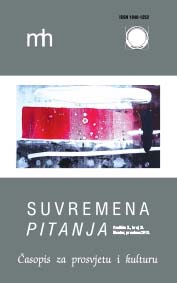Grobni križevi i spomenici katoličkog groblja Peruševac kod Bosanskog Grahova s kraja 19. I početka 20. st. - tihi svjedoci hrvatske opstojnosti
Sepulchral Crosses and Monuments in the Catholic Graveyard Peruševac Near Bosansko Grahovo from the Late 19th and the Early 20th Century – Silent Witnesses of the Croatian Existence
Author(s): Berislav ValušekSubject(s): History, Archaeology, Cultural history, Local History / Microhistory, Modern Age, Recent History (1900 till today), South Slavic Languages, 19th Century, Pre-WW I & WW I (1900 -1919)
Published by: Matica hrvatska Mostar
Keywords: Peruševac; sepulchral crosses; epitaphs; double burial; stećak; Church-Slavic language; Latin script; Glagolitic script; Cyrillic script
Summary/Abstract: The relatively young graveyard Peruševac near Bosansko Grahovo – with stone sepulchral crosses originating from between 1885 and 1928 – proved, upon the first systematic examination of the material, an interesting and intriguing field of a possible study of older linguistic, graphic and form-relevant survivals preserved on crosses. Linguistic, epigraphic, and paleographic analysis of the language of the inscription script on crosses, interdisciplinarily associated with iconographic and art history methods of reading the typology and morphology of forms, presentations, signs and symbols, have created a time bridge connecting the crosses at Peruševac with the characteristics of the medieval Hum and Bosnian tombstones – stećak, bilig or kamik. The archaic quality of the vernacular and of the inscription patterns of epitaphs has also pointed to the vestiges of the Church-Slavic language influences. while graphic-phonologic features and the language morphology suggested the lexis of the medieval Glagolitic and Cyrillic texts. The repetition of, for Christianity unusual eschatological formulae, illuminated for a moment the landscapes of the Croatian pagan antiquity – the custom of reburial. The form-related characteristics of most crosses, especially their proportions of reduced absolute measures, are a reflection of the ratios in which the so called krstače or krstine were formed as a type of the medieval stećak. In the end, the Peruševac graveyard is also evidence of a powerful growth of the Croatian Catholic population in the area of B. Grahovo in the second half of the 19th century as well as of its present day existence.
Journal: Suvremena pitanja
- Issue Year: 2015
- Issue No: 20
- Page Range: 123-154
- Page Count: 32
- Language: Croatian

